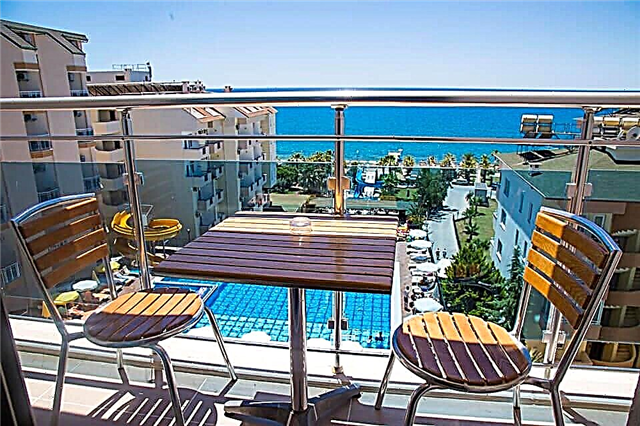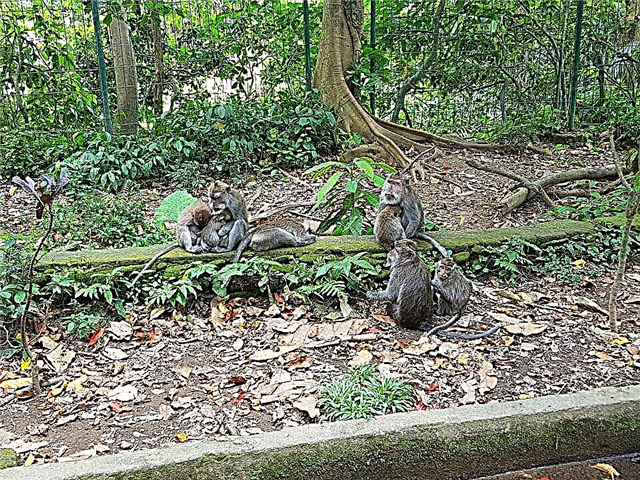The Indonesian island of Bali is considered one of the most popular tourist destinations in the world. In the center of the island is the city of Ubud, which is in many ways different from other resort areas in Bali. There are no paradise sandy beaches with palm trees, washed by the emerald ocean, luxury hotels and restaurants. This small town, located at an altitude of 600 meters above sea level, is surrounded by the magnificent nature of the tropical jungle. The local humid climate creates favorable conditions for evergreen forests, plants and animals. The main attraction in Ubud is the monkey forest. Many macaques live among thickets, bushes, large trees. In addition to the local primates, the area is famous for its temples and stone sculptures.
What is interesting

The Monkey Forest is a natural, protected and tourist area with an area of over 100,000 square meters, in which about 1000 primates live. The state ensures the implementation of a number of complexes of environmental programs for the protection and care of these creatures. In Bali, Hinduism is practiced. In this religious direction, monkeys are declared sacred animals.
Upon entering the park, tourists find themselves in the land of monkeys in their natural habitat. Huge banyan trees (trees with hanging roots), lianas, dense thickets with various plants, stones covered with green moss - such an environment contributes to the carefree life of primates. These dexterous "acrobats" jump from branch to branch, climb trees, stones, and also swim in the local reservoir. They walk imposingly along the paths of the park, play and frolic with each other.
Macaques do whatever they see fit for themselves. The owners of the forest can easily jump on a person, climb a leg on a shoulder, sit on their head. With curiosity, they will explore every detail of the traveler's wardrobe: buttons, collars, jewelry, glasses, backpacks and bags.
The city of Ubud is the cultural center of Bali, where creative people settled. Temples and museums were built here. The work of the Balinese is original, beautiful and unusual. On the territory of the monkey forest, there are many stone sculptures depicting macaques, lions, dogs, bulls, dragons, elephants and even pigs. Most of the statues are covered with moss, which gives the local area a special flavor.

In the depths of the reserve there are three temples, a small waterfall and a holy spring. According to legend, monkeys are the guardians of sacred relics in this protected area. Special staff of the park ensures safe communication between humans and monkeys. Primates always feel the watchful gaze of the warders. If you do not show aggression towards monkeys and follow the rules, then tourists are guaranteed a safe and pleasant pastime in the forest.
Rules of behavior

The local primates are very good-natured-looking creatures. However, it is important to be extremely careful when dealing with them. Do not forget that these are wild animals, the behavior of which can be unpredictable. In the concept of monkeys, man is a guest. In front of the entrance to the park, there is a stand with instructions on how tourists should behave in a macaque society:
- don't panic, don't raise your voice
- do not look into the eyes of an animal
- hold your belongings tightly (especially a camera, camcorder, phone)
- do not pet baby monkeys
- do not show your teeth
- do not lift anything from the ground
- do not tease primates
By adhering to these rules, a person is not threatened by a monkey bite. Tourists need to pay special attention to primate feeding. Giving food to monkeys is not recommended. Many visitors to the reserve ignore this advice. Food brought by man attracts increased attention of monkeys. The main thing is not to tease or deceive the animal.
For example, if there is such a joker who decides to show the monkeys a banana and then hide it, then aggression from the primates is guaranteed. Being deprived of hope of getting a treat makes the monkeys want to punish the guest with a bite.

Monkeys in the reserve do not starve. In addition to the availability of food, obtained independently in the forest, the animals are fed by the staff of the park. Primates are very fond of sweet potatoes (yams). Before entering the forest, it is recommended to remove jewelry, earrings, watches, glasses, and securely close your backpack. Otherwise, you can lose your property overnight. The monkeys are used to the constant flow of visitors. They behave quite peacefully, but in the genes of primates is inherent curiosity for bright trinkets. Tourists need to be extremely vigilant.
How to get there

It is quite easy to get to the town of Ubud. From the resort coastal areas, the distance to the forest is on average 40 km. Local tourist offices organize bus services from Denpasar Airport as well as from other parts of the island to Ubud. The fare is about $ 5. You can also use a taxi service. Ordering a car will cost about $ 20 one way. Every year travel for tourists in Bali is becoming more expensive. Local bus stations and travel agencies deliberately increase the cost of travel, taking advantage of the constant growth in demand for this type of service.
To move along the narrow paths of the island, tourists can rent a scooter. This type of transport is very popular. The rental price ranges from $ 4 to $ 6 per day. The price depends on the model of the scooter, as well as on its condition. The main street of Ubud, Jalan Monkey Forest, leads to the monkey forest. You can get to it on foot. It is a popular city center location, so it is impossible to get lost. According to statistics, the forest is visited by about 10,000 tourists a month.
Opening hours and ticket prices
Ubud Monkey Forest is open to visitors from 8:30 am to 6:00 pm. The cost of one ticket is $ 4. Two hours of walking in the reserve is enough to observe monkeys and take a beautiful photo with them.











